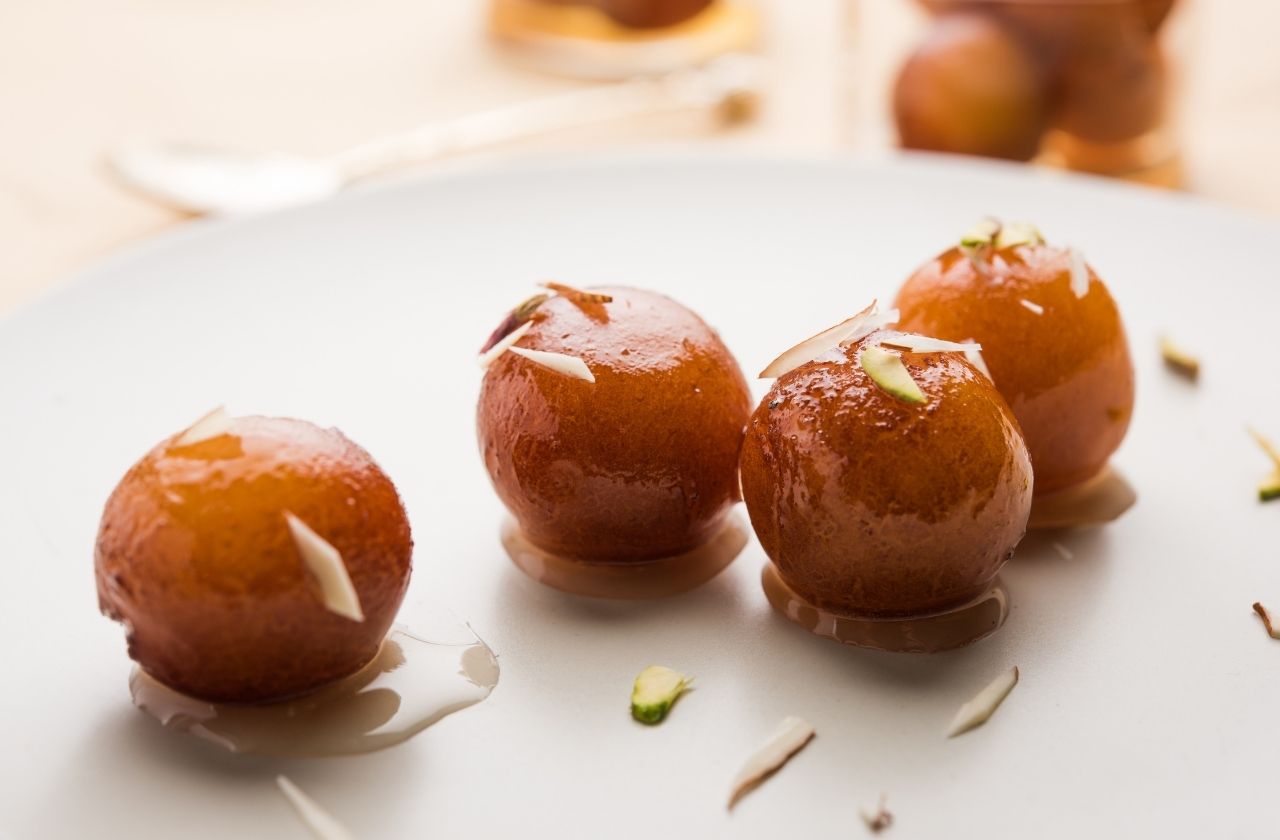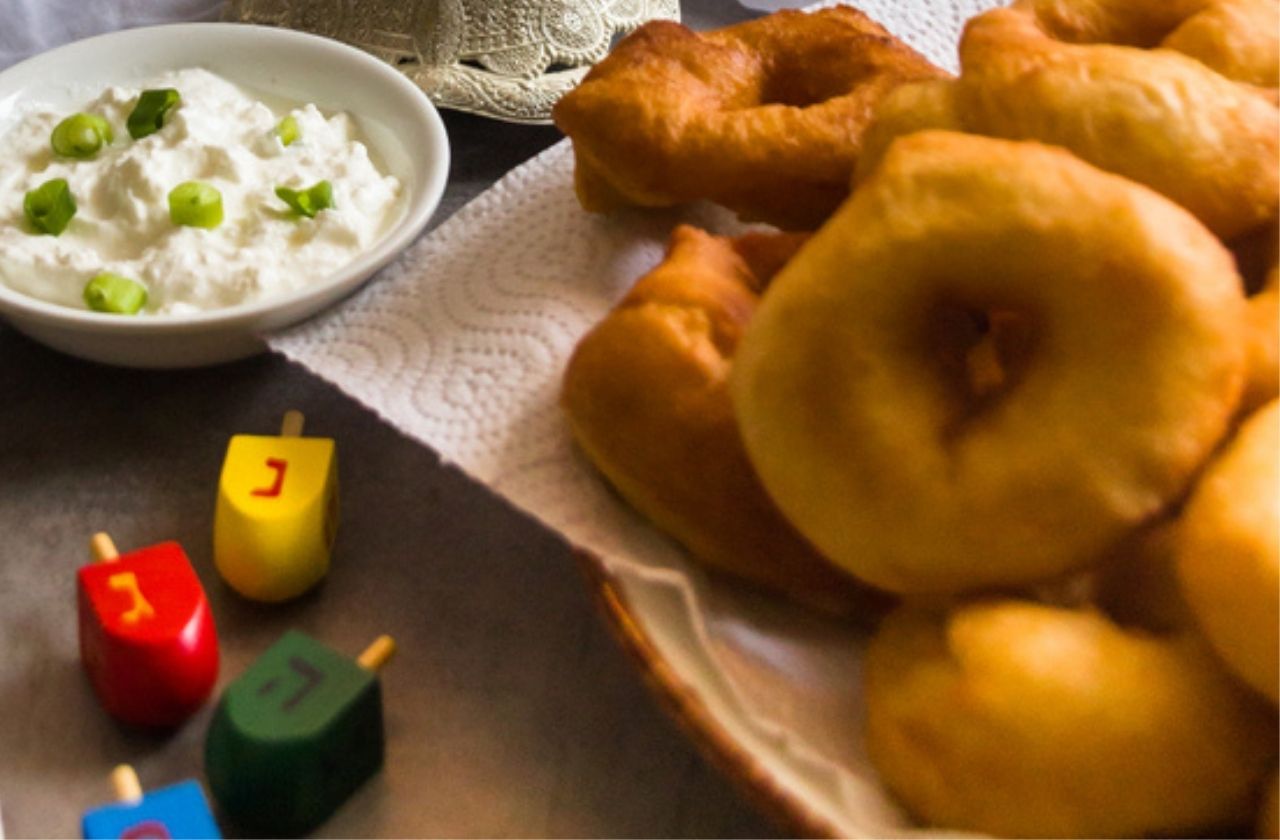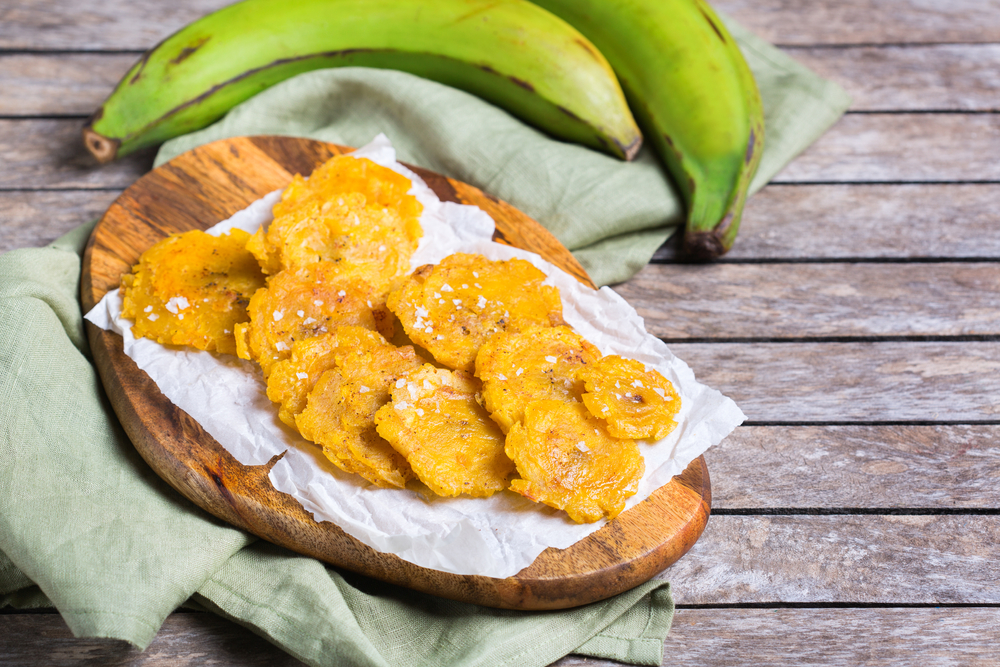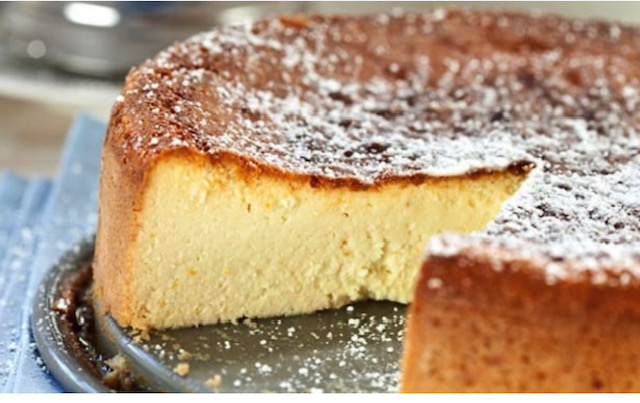Oh Chanukah, Oh Chanukah…
Food Traditions from Around the World
by Shoshana Isaacson
UNORTHOBOXED Magazine Food Editor
Hearing the lyrics of these Chanukah songs evokes many memories. Remembrances of the sights and sounds of past years, of celebrations and family. Recollections of trials, great miracles, tragedy and triumph. We also are reminded of the stories associated with Chanukah; those of the Maccabees, of Chana and her sons and the story of Yehudit. And oh, the sensory overload as we remember the smells of our favorite Chanukah treats. For Jews of Ashkenazi descent this means potato latkes. The variations abound. Whether made from white, gold or sweet potatoes, made with flour or with matzo meal, served with applesauce or with sour cream, and on and on. There are as many different recipes as there are corners of eastern Europe. In Israel, sufganiyot (filled donuts) reign, each bakery claiming to have the best.
But what are Chanukah foods from other areas of the diaspora? Like all of the foods eaten by Jews of the diaspora, Chanukah foods have also taken on the flavors and traditions of the countries we live in around the world.
The two constants are that the foods are fried in oil or made of dairy. We eat foods fried in oil to remind us of “the great miracle that happened there”. When the Temple was cleansed and being purified for use, only one small vial of purified oil was found and although it should have only lasted one day, it burned for eight whole days until more oil could be produced. It is also a custom to eat dairy-based foods on Chanukah in remembrance of Yehudit. Matityahu’s widowed sister-in-law was able to entice Holofernes (a general of Nebuchadnezzar) into allowing her into his tent. She proceeded to ply him with salty cheese, causing him to become thirsty. He quenched his thirst with strong wine. When he had drunk so much that he fell asleep from intoxication, she took his sword and beheaded him. His displayed severed head inspired many Israelites to attack the Assyrian army. So in remembrance of Yehudit and her bravery, it has become traditional in many families to eat cheese and foods made with cheese.
In every place that Jews live, the foods that are eaten during Chanukah are similar to each other, but because they are influenced by the local seasonings and tastes, each is unique. Interestingly the Beta Israel of Ethiopia have no Chanukah traditions, as the texts pertaining to Chanukah and its celebration did not exist when they left Israel. The celebration of Chanukah and its traditions have only been embraced since they have returned to Israel, starting in the late 1970s.
The Jews of Cochin and Malabar, however, did bring Chanukah with them when they made their way to India. In many Jewish homes in these regions one might find syrupy sweet Gulab Jamun being served during Chanukah. These fried dough balls are made with milk and flour, dipped in warm honey or a rose water syrup and sprinkled with chopped pistachios.
Like the Jewish communities in India, the Jewish community of Kaifeng, China brought Chanukah along on its journey. Believed to have been escaping the onslaught of Islam, the Jews that settled in China arrived some time during the Song Dynasty (960 – 1279 C.E) via the Silk Road. Although they had maintained their Jewish identities and faith for centuries, sadly during the last century they have become mostly assimilated and can only claim to be descendants of Jewish ancestors. The foods of this community are highly influenced by the surrounding culture, so it would be likely that the ubiquitous Sesame Ball, a deep-fried, sweet, filled dough ball coated with sesame seeds would be served in the homes of Kaifeng Jews during Chanukah. In the homes of Jews of Moroccan descent you will find Sfinj frying in oil, to be dusted with powdered sugar while still hot, just before being served.
In Latin America there are many different traditions as the Jews that have settled there came from both Sefardic and Ashkenazic communities over a broad time frame, spanning centuries. With each wave of immigration, new customs were brought along and influenced by the local cuisine. During Chanukah there are variations of latkes made with vegetables, indigenous tubers, as well as cheese. Fried sweet plantains dusted with powdered sugar or dipped into honey or syrup are also prevalent throughout Latin America and the Caribbean.
Two of the most beloved foods in Italian cooking have their origins in the Jewish ghettos of ancient Italy. Fried eggplant and cassola – a sweet ricotta cheesecake – both were traditional foods eaten during Chanukah. During the Middle Ages, eggplant was seen as a food that only was eaten in Jewish homes and wasn’t sold in non-Jewish marketplaces. Today cassola is one of the most popular holiday desserts for non-Jews throughout Italy during the December holidays.
When thinking about Chanukah foods eaten in the United States, most people think about the traditional latkes that the immigrants from Eastern Europe brought with them. However, the once large and thriving Jewish community of Lancaster, Pennsylvania lived side by side with the Amish community, since both groups arrived and made the area home as part of William Penn’s “holy experiment” in the early 1730s. In this area, a favorite Chanukah treat is the Amish Funnel Cake. A pancake-like batter drizzled through a funnel into hot oil, then drained and sprinkled with powdered sugar.
Regardless of where in the world Jews live today, the influence of the local area is apparent in the variety of the foods we eat during this festive season. As you prepare to celebrate this year, consider adding one of these tasty delicacies to your family’s menu. Talk to your families about the traditions that have traveled worldwide to any place Jewish people have made home.
For additional Chanukah recipes visit Shoshana at The Out of Town Cook
Gulab Jamun
Dairy or parve
(based on a recipe written by Manjula Jain, makes 10)
Ingredients
1 cup milk powder
¼ cup all-purpose flour
3 tablespoons unsalted butter, softened to room temperature
¼ cup whole milk
¼ teaspoon baking powder
1¾ cups granulated sugar
1 cup water
½ cup rose water
4 cardamom pods
1 or 2 tablespoons sliced almonds and chopped pistachios
Low smoke point oil for deep frying

Step by Step Instructions
Step 1
Begin by making the syrup.
In a saucepan bring the water, rose water, cardamom pods and sugar to a boil.
Step 2
Let simmer until the sugar has completely dissolved. Remove from heat and set the syrup aside.
Step 3
In a mixing bowl combine the milk powder, flour and baking soda.
Step 4
Add the softened butter to the dry ingredients and mix well.
Step 5
Pour the milk into the flour and butter mixture to create a soft dough. If needed, a bit more milk may be added. Let the dough sit for a few minutes to rest.
Step 6
With buttered hands knead the dough until it is smooth and an even texture.
Step 7
Divide the dough into ten evenly sized pieces and using your hands roll them into balls and set aside.
Step 8
Heat about one or two inches of oil to fry the gulab jamuns in a deep-sided pan. The oil should be hot enough that a droplet of water or a tiny piece of dough sizzles when placed into the oil.
Step 9
Carefully place the dough balls into the hot oil. Make sure to fry only a few at a time as they will expand to about twice the size while frying.
Step 10
Continue frying the dough balls on medium heat until evenly golden brown all around, approximately 7 to 10 minutes.
Remove to a rack to drain and let cool for a few minutes.
Step 11
Place the fried balls into the warm syrup and let sit for about 20 minutes to absorb some of the syrup.
Step 12
Sprinkle with the sliced almonds and the chopped pistachios to serve.
Note: To make this recipe parve, substitute non-dairy milk of choice for the milk. There are a variety of non-dairy milk powders available on the market (soy, oat or coconut milk powder) that can be used in place of the milk powder, and any vegan butter or parve margarine can be used in place of the butter.
Sesame Balls
parve
(Based on a recipe from thewoksoflife.com, makes 8)
Ingredients
1 1/2 cups glutinous rice flour, divided into ½ cup and 1 cup measures
1/3 cup granulated sugar
1/4 cup boiling water
1/4 cup room temperature water plus 1 tablespoon
7 ounces filling – lotus paste or red bean paste are traditional
1/4 cup sesame seeds, raw or toasted are fine
4 cups peanut or vegetable oil for frying

Step by Step Instructions
Step 1
Choose a filling and set aside.
Step 2
To make the dough begin by putting ½ cup glutinous rice flour and ⅓ cup granulated sugar into a bowl.
Step 3
Add ¼ cup boiling water and mix well until smooth and set aside for 5 minutes.
Step 4
After the above has rested add the remaining cup of rice flour to the dough and mix until well combined and a smooth dough has formed.
Step 5
Cover with an inverted plate and set aside to rest again, this time for 30 minutes.
Step 6
Prepare the sesame seeds while the dough is resting by putting them into a fine mesh sieve or a fine mesh bag and rinsing them with warm water until they are thoroughly soaked.
Step 7
Let the water drain and then place them onto a plate or flat surface to roll the balls into. Make sure the sesame seeds are damp, not dripping wet, at this point.
Step 8
Cut your filling into 8 equal pieces and set aside.
Step 9
Divide the dough into 8 equal pieces and place onto a plate or pan and cover with a damp cloth to prevent them from drying out.
Step 10
Press one dough ball at a time into a 3-inch disc, with the center of the disc being slightly thicker than the edges.
Step 11
Put one piece of the filling into the center of the disc and wrap the dough around the filling, pinching the ends to seal them.
Step 12
Roll this between your hands to create even balls with no visible seam.
Step 13
Roll the ball into the moistened sesame seeds until it is fully covered. Then roll the ball in your hands again to press the sesame seeds lightly into the dough.
Step 14
Place the coated dough ball on a piece of parchment paper and repeat with remaining dough and filling.
Step 15
Meanwhile, bring 4 cups of oil to 320F/160C in a deep-sided pot. Use a thermometer to check the temperature and be sure to keep the temperature consistent throughout the frying process.
Step 16
Add ½ of the sesame balls to the oil and fry for about 10 minutes until they rise to the surface of the oil. Using a spider or slotted spoon, gently roll the balls around in the hot oil so that the whole surface of each ball fries evenly, another 7 to 8 minutes.
Step 17
Remove the sesame balls from the oil and drain on paper towels or a rack. Repeat with the remaining dough balls.
Serve immediately after cooling.



